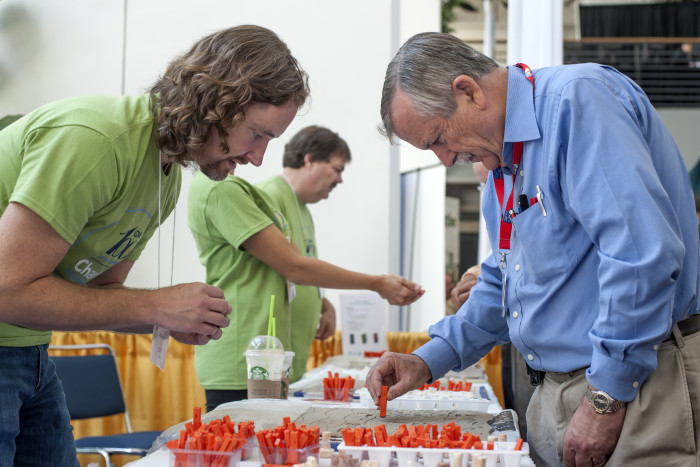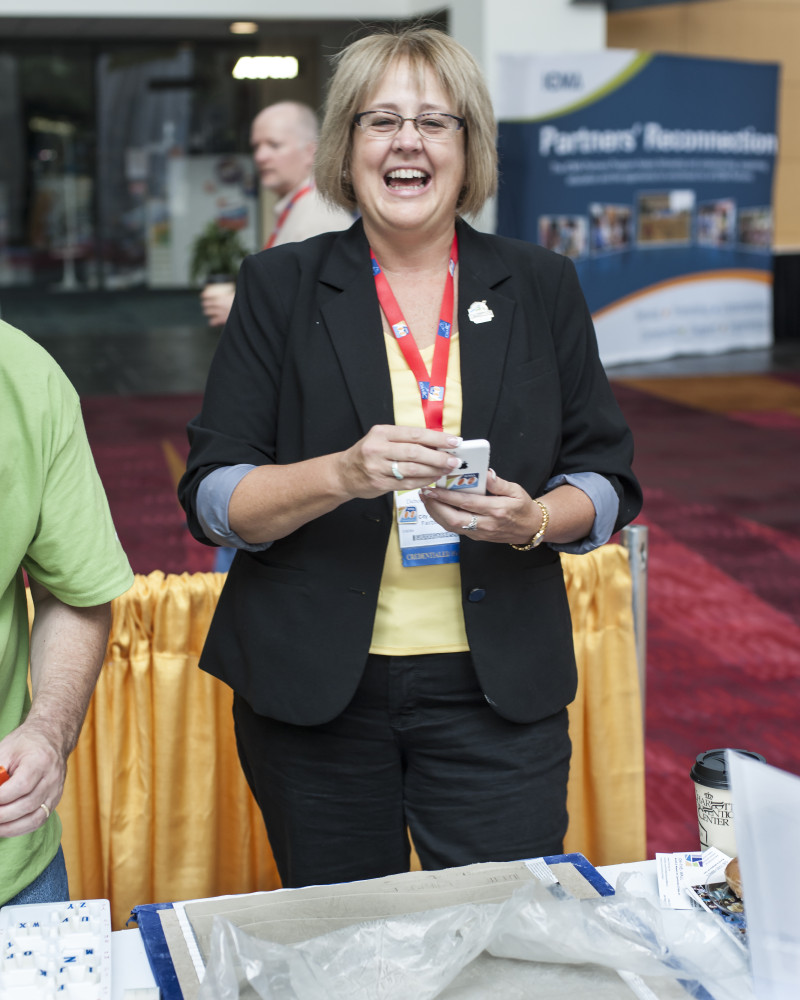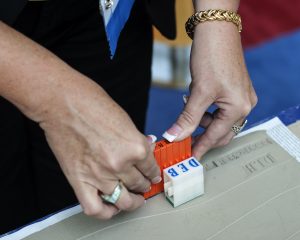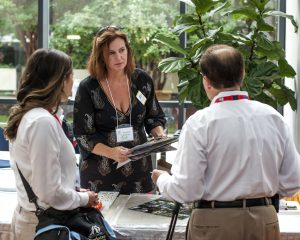
Can “bureaucrats” turn art and joint art-making into community collaboration? I enjoyed being a part of a recent experiment which left me with ideas for how local government managers can do this in their communities.
In September, over 3400 public sector professionals and colleagues attended the 100th Anniversary Conference of the International City/County Management Association here in Charlotte- Mecklenburg County. The 100th Conference was a time to reflect on the achievements of public management professionals and to celebrate the continued strength of a profession that prides itself on knowing the pulse of the local community and finding ways to strengthen that community.

In recent years, community engagement has been a hot topic for the Association. The discussion has been about creating an environment not only where residents can interact better with their local government, but where residents are able to share ideas and concerns with each other directly, identify common challenges, solve shared problems, and make their community better on their own. The expectation is that engagement is not only a “dialogue” about something, but indeed the “collaborative creation” of something.


The 100th conference offered a laboratory for collaborative creation, in the form of an art project open to all attendees. One goal of the project was to offer attendees a model of engagement through artistic participation. Another goal was to fulfill a long-standing tradition of the host community “presenting” art to the Association.
While prior gifts had been intended for display at the Association headquarters in D.C., the product of this endeavor is destined to remain in Charlotte as public art, in commemoration of the conference and in honor of the tireless efforts of public management professionals around the world.

So, what learnings can this “model” offer to local government managers who might want to utilize art as a means of engagement back in their own communities?
1. Creative collaboration requires both preparation and a willingness to “wing it”
Members of the Charlotte-Mecklenburg conference host committee worked with mosaic artist Leslie Scott to plan the project. Leslie has pioneered the collaborative approach to creating public art, first from her former home in California, and now from Charlotte.

Leslie designed the mosaics, determined how the attendees could participate in a meaningful way, and planned out the space and resources needed for the 2-day creative effort.
In this case, attendees were invited to stamp designs and letters into the damp clay that Leslie would later use to create the mosaics. A great diversity of conference attendees participated, laughing and talking about their plan to individualize a little patch of clay.
The art project area was conspicuously located in the Convention Center entry hallway, next to the host committee’s hospitality area (imagine a comfortable space to rest, have a coffee or tea, and meet up with old friends). Attendees strolled up to the project area and were greeted by a knowledgeable volunteer who briefly explained the mosaic project and offered general guidance about using the available tools to stamp the clay. Though a sign-up process was offered, most participants arrived on a “walk-up” basis. With 8 workstations available for around 14 hours over 2 days, there was rarely a wait.
2. Excitement about the creative process ripples into on-line engagement
Once participants understood the intent of the project, they were happy to locate the letter or design stamps they wanted to use. Many stamped their initials and the name of their city or county; others chose to stamp the name of a landmark, work project, or initiative that is significant to their career, still others used decorative stamps to create a design in the clay. Many mixed and matched their stamps. Strikingly, many participants wanted to share their experience beyond the community of the conference.

They snapped cellphone pictures and posted them to Facebook or Twitter. I imagine a few went into emails or were published in digital or hard copy newsletters once the attendees returned home.
3. The permanence of public art is powerful point of community pride
The conference host committee used the tag line “Leave your mark on Charlotte Mecklenburg” to encourage participation in the art project. Once completed, the mosaics will be permanently installed in the lobby of the Charlotte Mecklenburg Government Center. Those who made their stamp in the clay will be able to return to the Government Center and maybe – just maybe – find their unique stamp within the public art! After the attendees successfully stamped the clay, they received a sticker declaring “I left my mark on Charlotte Mecklenburg.”
For these local government professionals, the tag line drilled home the point that their engagement in the artistic endeavor created a permanent testament of their involvement. Also, it let them understand the power of using a similar engagement strategy when they returned to their own communities.
The completed mosaics, they are scheduled to be installed in the lobby of the Charlotte Mecklenburg Government Center in January.
Have you used art or jointly-created art products for community engagement? I know some schools do this through murals; but how about getting adults into meaningful art work for building community?
Brilliant project! Gina, I would love to talk with you about this project. Do you have time for coffee/tea in the next couple of weeks? Thanks.